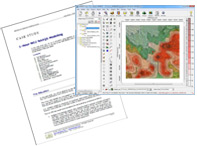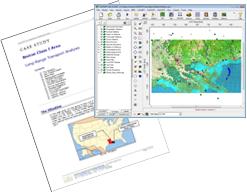Lakes Environmental e-Newsletter
In this issue:
- News & Events
- Upcoming Courses
- Modeling Tip: Wind Rose Visualization for CALMET using CALPUFF View™
- Articles
- Upcoming Conferences & Trade Shows
News & Events
CALPUFF View Version 5.0 Released
Lakes Environmental is proud to announce the release of CALPUFF View Version 5.0 on February 26, 2012.
Please find below a list of the main features implemented in this release:
For a detailed list of new features available in Version 5.0, please check out our latest release notes. |
If you are currently in maintenance for CALPUFF View and did not receive an email regarding this update, please contact us at support@webLakes.com.
If you are a user of CALPUFF View but are no longer in maintenance please contact sales@webLakes.com to find out how you can begin using CALPUFF View Version 5.0!
US EPA Releases AERMOD Model Dated 12060
The U.S. EPA posted an update to the AERMOD air dispersion model, dated 12060, on the SCRAM website, on Friday March 2, 2012. This update addresses several issues related to the MAXDCONT option and other miscellaneous items.
The MAXDCONT output option, introduced with AERMOD model 11059, is applicable to daily maximum values for the 24-hour PM2.5 NAAQS and the new 1-hour NO2 and SO2 NAAQS standards.
|
Lakes Environmental team is hard at work implementing updates to AERMOD View and to the AERMOD Parallel Version (AERMOD MPI) to address the changes incorporated into AERMOD Model Version 12060.
Lakes Environmental plans to release the new version of AERMOD View next week. Be on the lookout for an email from Lakes Environmental announcing the new release.
If your AERMOD View license is no longer in maintenance, please contact our sales team at sales@webLakes.com for pricing to update your software.
Additional US EPA SCRAM Updates in March
The US EPA was busy this month of March as not only were updates made to the AERMOD model (Version 12060) but additional documents were also released on the EPA’s SCRAM site.
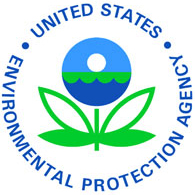 |
|
AERMOD and CALPUFF Courses in Las Vegas, Nevada – May 14-18, 2012
|
Lakes Environmental is pleased to be presenting a full week of AERMOD and CALPUFF training in Las Vegas, Nevada from May 14 to 18, 2012. Attending these courses is the best way to stay current with recent regulatory and methodology changes. Lakes Environmental uses cutting edge tools that will revolutionize the way you do air dispersion modeling! We provide attendees with a full understanding of the AERMOD and CALPUFF modeling systems by balancing theory with hands-on real-world case studies using Lakes Environmental's advanced graphical user interfaces, AERMOD View and CALPUFF View. |
||
AERMOD CourseFeaturing 1-Hour NO2 NAAQS Case Study |
CALPUFF CourseFeaturing FLAG 2010 Class I Area Case Study |
|
|
Don't miss this opportunity to be trained by our dedicated senior level experts! Spaces are filling up fast! Register soon in order to reserve your spot. Further details including course venue and registration form can be found on our website. |
||
Lakes Environmental at CANECT 2012
Lakes Environmental will once again be exhibiting at the Canadian Environmental Conference & Tradeshow, CANECT 2012 in Mississauga, Ontario from May 1-2, 2012.
Come and visit us at booth 1438 for information about our software products, as well as your chance to win a FREE copy of our AERMOD View software! To obtain conference information, please visit the CANECT website.
Lakes Environmental Closed for the Good Friday Holiday
Lakes Environmental will be closed on Friday, April 6th, 2012 to observe the Good Friday Holiday. If you have any needs during that time, please e-mail us at support@webLakes.com and we will contact you on Monday, April 9, 2012 when our offices reopen.
Upcoming Courses

Date |
Course |
Location |
Registration |
Apr 26-27, 2012 |
|||
May 14-15, 2012 |
|||
May 28-30, 2012 |
|||
Jun 4-5, 2012 |
|||
Sep 27-28, 2012 |
Mexico City, Mexico |
Registration Coming Soon |
|
Oct 15-16, 2012 |
London, UK |
Registration Coming Soon |
|
Nov 5-6, 2012 |
Brazil |
Registration Coming Soon |
For more information on the above courses, including registration information, location, and course outlines, please visit our web site: https://www.weblakes.com/courses.html.
Modeling Tip
Wind Rose Visualization for CALMET using CALPUFF View™
The CALPUFF model can use three-dimensional meteorological fields developed by the CALMET model from prognostic and observational data. These spatially-varying meteorological variables can transform puffs as the model calculates concentrations and deposition fluxes.
Modelers can easily visualize the wind field in two and three dimensions for the entire meteorological grid with CALPUFF View. The new CALPUFF View Version 5.0 allows users to generate a wind rose for any meteorological grid cell. Other meteorological variables can also be analyzed in the time series file that is generated.
Follow the simple steps below to create a custom wind rose in CALPUFF View Version 5.0:
Step 1: After successfully running CALMET (or importing a CALMET.DAT file into CALPUFF View), select the Wind Rose Tool on the Annotation Toolbar.
Step 2: Click the left mouse button on the drawing area, at the location where you want to generate a wind rose. The Wind Rose Tool dialog is displayed.
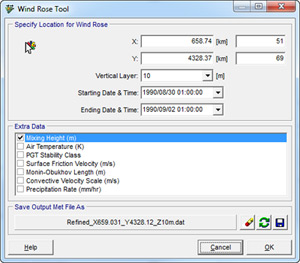
Step 3: The X and Y coordinates and met grid cell numbers of the selected location are displayed in the Specify Location for Wind Rose panel. You can change these values at any time if you desire. Select the vertical layer from the Vertical Layer drop-down list as well as the Start and Ending Date & Time.
Step 4: The Extra Data options include additional parameters which may be extracted from the CALMET.DAT file. Place a check in the box next to any additional parameters you want to extract. While these parameters will not be plotted, they are written to the time series file (*.dat) in ASCII/text format.
Step 5: The Save Output Met File As panel displays a default name for the data file that is generated. You can change the default name and location if you wish. This file will be saved in a time series format and contains the data extracted from the CALMET.DAT file for the selected met grid cell and specified vertical layer.
Step 6: The generated data file is displayed as a wind rose in WRPLOT View. Besides the graphical wind rose, WRPLOT View presents tabular distribution data, graphs of wind distribution, and the ability to export the wind rose to Google Earth.
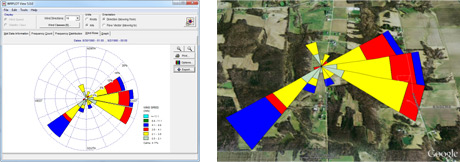
Submit Your Modeling Tip Today!
We are currently accepting submissions for the Monthly Modeling Tip section that appears in our newsletters. If you have a modeling tip that may benefit our readers, please send it to us at support@webLakes.com. Your name and the name of your organization will appear below the tip providing you with an opportunity for increased exposure.
Articles
EPA Approves Southern Ute Indian Tribe’s Air Permitting Program
Denver, Colo. - March 5, 2012 - The U.S. Environmental Protection Agency today announced its approval of the Southern Ute Indian Tribe’s air permitting program, making the Tribe the first in the nation to operate an EPA-approved Clean Air Act program for large sources of air emissions. The Tribe’s headquarters are located near Ignacio, Colorado.
The Clean Air Act operating permits program allows the Tribe to issue permits and perform inspections at large stationary sources of air emissions on the Reservation, the majority of which are associated with oil and gas production. EPA will continue to work with the Tribe in an oversight capacity, as it does for State permitting programs.
Greenhouse Gas Protocol Launches in India
March 9, 2012 - The use of standards to account for corporate greenhouse gases is increasingly common in developed countries – but it is emerging in developing countries as well.
In India, companies’ focus on value chain inventories and life cycle thinking is in nascent stages. That’s why the Greenhouse Gas Protocol, a collaboration of the World Resources Institute and the World Business Council for Sustainable Development is partnering with The Energy Resources Institute (TERI) in launching its two new tools, the Product Life Cycle and Corporate Value Chain (Scope 3) Accounting and Reporting Standards, in New Delhi next week.
These new standards establish a comprehensive, global, standardized framework for businesses and other organizations to measure their value chain and product emissions and to reduce their impacts on the climate.
EPA Proposes to Keep Greenhouse Gas Permitting Requirements Focused on Largest Emitters
WASHINGTON - February 27, 2012 - The U.S. Environmental Protection Agency (EPA) is proposing not to change the greenhouse gas (GHG) permitting thresholds for the Prevention of Significant Deterioration (PSD) and Title V Operating Permit programs. Today’s proposal is part of EPA’s common-sense, phased-in approach to GHG permitting under the Clean Air Act. EPA is also proposing steps that would streamline the permitting process for large emitters already covered by the agency’s program, including sources that account for nearly 70 percent of the total GHG pollution from stationary sources.
EPA’s proposal is consistent with its phased-in approach, announced in 2010, to “tailor” the requirements of the Clean Air Act to ensure that industrial facilities and state governments have the tools they need to minimize GHG emissions and that only the largest emitters need permits.
After consultation with states and evaluating the process, EPA believes that the current approach is working well, and that state permitting authorities are currently managing PSD permitting requests. Therefore, EPA has proposed not to include additional, smaller sources in the permitting program at this time.
EPA Finalizes Air Toxic Emissions Standards for Polyvinyl Chloride (PVC) Production Facilities/Standards will Cut Harmful Emissions that Impact Local Communities
WASHINGTON - February 14, 2012 - The U.S. Environmental Protection Agency (EPA) today issued strong final standards requiring facilities that produce polyvinyl chloride and copolymers (PVC) to reduce harmful air emissions, which will improve air quality and protect people’s health in communities where facilities are located. Exposure to toxic air pollutants, like those emitted from PVC facilities, can cause respiratory problems and other serious health issues, and can increase the risk of developing cancer. In particular, children are known to be more sensitive to the cancer risks posed by inhaling vinyl chloride, one of the known carcinogens emitted from PVC facilities.
The final standards are based on currently available technologies and will reduce emissions of air toxics, such as dioxin and vinyl chloride. Facilities will have the flexibility to choose the most practical and cost-effective control technology or technique to reduce the emissions. Facilities will be required to monitor emissions at certain points in the PVC production process to ensure that the standards are met.
Upcoming Conferences & Trade Shows
Date |
Conference |
Location |
Mar 19-23, 2012 |
8th International Conference on Air Quality |
Athens, Greece |
Mar 25-27, 2012 |
Gulf Environment Forum 2012 |
Jeddah, Saudi Arabia |
Apr 22-27, 2012 |
International Polar Year (IPY) 2012 Conference |
Montréal, QC, Canada |
Apr 30 - May 2, 2012 |
CANECT 2012 |
Mississauga, ON, Canada |
May 16-18, 2012 |
Air Pollution 2012 |
Corunna, Spain |
May 23-24, 2012 |
34th Motorship Propulsions and Emissions Conference |
Hamburg, Germany |
May 30-Jun 1, 2012 |
Carbon Expo 2012 |
Cologne, Germany |
Jun 12-13, 2012 |
Emissions 2012 |
Ypsilanti, MI, USA |
Jun 19-22, 2012 |
A&WMA 105th Annual Conference and Exhibition |
San Antonio, TX, USA |
Jun 25-29, 2012 |
The 6th International Conference on Environmental Science and Technology |
Houston, TX, USA |
About this Newsletter
This newsletter contains information gleaned from various sources on the web, with complete links to the sources cited. Organizations cited are in no way affiliated with Lakes Environmental Software.
Lakes Environmental Software is a leading environmental IT company that offers a complete line of air dispersion modeling, risk assessment, emissions inventory, and emergency release software as well as training and custom software services. With satisfied users located around the globe, Lakes Environmental Software will continue to revolutionize the environmental software field.
For more information please visit our web site at: www.webLakes.com. You may also contact us by phone at (519) 746-5995 or by fax at (519)746-0793.
All comments and suggestions are welcome. You can e-mail us at: support@webLakes.com.






